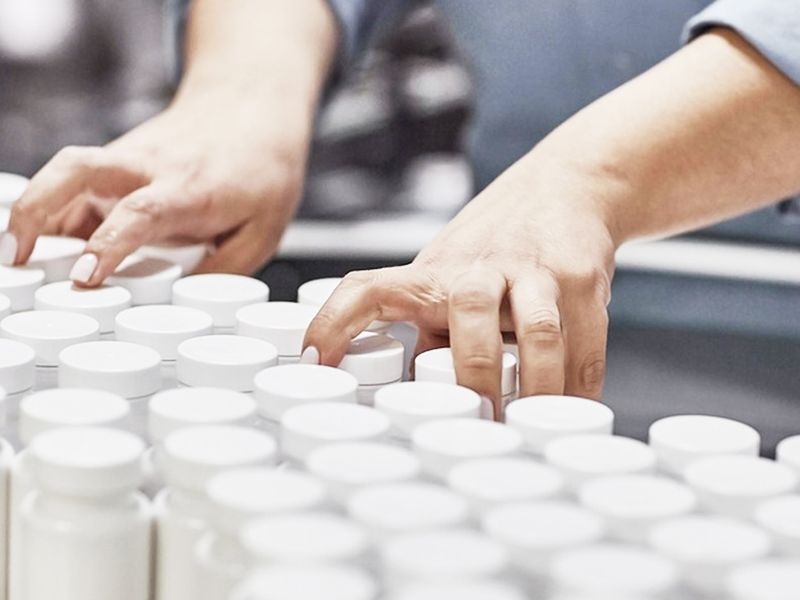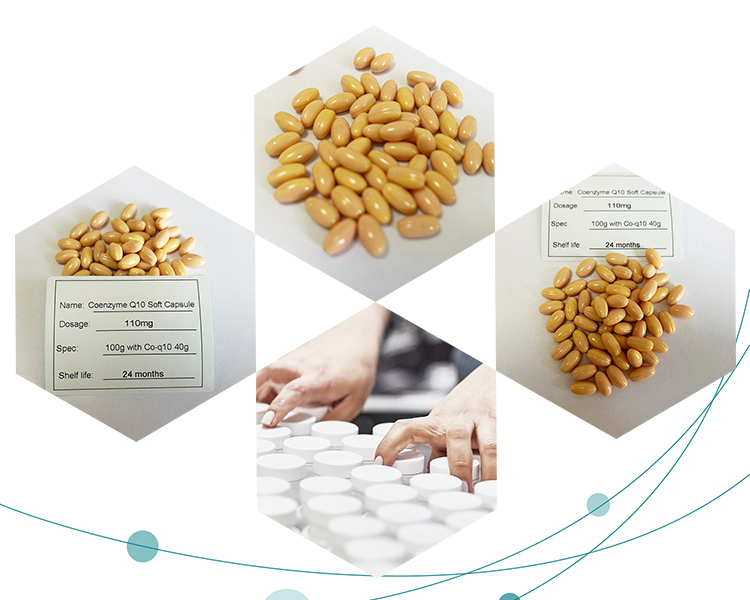Coenzyme Q10 capsules are dietary supplements that contain Coenzyme Q10 in a concentrated form. The manufacturing process and formulation of Coenzyme Q10 (CoQ10) capsules may vary slightly depending on the specific manufacturer and regulations in the region where they are produced. However, I can provide you with a general outline of the typical materials and methods involved in manufacturing Coenzyme Q10 capsules:
Materials of Coenzyme Q10 Capsules:
1.Coenzyme Q10: This is the primary active ingredient of the capsules. Coenzyme Q10 is a naturally occurring compound found in the body, particularly in organs with high energy requirements like the heart, liver, and kidneys.

2.Excipients: These are inactive ingredients used to facilitate the manufacturing process, improve stability, and aid in the delivery of the active ingredient. Excipients commonly used in Coenzyme Q10 capsules may include:
Fillers: such as microcrystalline cellulose, lactose, or dicalcium phosphate.
Binders: such as polyvinylpyrrolidone (PVP) or starch.
Lubricants: such as magnesium stearate or stearic acid.
Disintegrants: such as croscarmellose sodium or sodium starch glycolate.
Antioxidants: to prevent degradation of Coenzyme Q10, such as vitamin E or ascorbic acid.
Capsule shell materials: typically made from gelatin or vegetarian alternatives like hydroxypropyl methylcellulose (HPMC).
3.Packaging materials: Capsules are usually packaged in blister packs or bottles, along with appropriate labeling and patient information.
Methods of Coenzyme Q10 Capsules:
1.Weighing and Mixing: The active ingredient (Coenzyme Q10) and excipients are accurately weighed according to the formulation recipe. They are then mixed thoroughly to ensure uniform distribution of the active ingredient and excipients.
2.Granulation (if needed): In some cases, particularly if wet granulation is utilized, the mixture may be granulated using a solvent or binding agent to improve the flow properties and compressibility of the powder blend.
3.Encapsulation: The mixed and granulated powders are filled into capsules using encapsulation machines. The capsules may be of different sizes depending on the dosage requirements.

4.Polishing: The filled capsules may undergo a polishing step to remove excess powder and ensure a smooth, uniform appearance.
5.Quality Control: Throughout the manufacturing process, quality control checks are conducted to ensure the capsules meet specifications for dosage uniformity, dissolution rate, stability, and absence of contaminants.
6.Packaging: The filled and polished capsules are then packaged into blister packs or bottles, along with appropriate labeling indicating the product name, dosage strength, expiration date, and other relevant information.
7.Storage: Finished Coenzyme Q10 capsules are stored under appropriate conditions to maintain their stability and efficacy until they are distributed to consumers.
It’s essential to note that the manufacturing process for dietary supplements like Coenzyme Q10 capsules is subject to regulations and standards enforced by regulatory authorities such as the FDA (in the United States) or the European Medicines Agency (in Europe). These regulations ensure the safety, quality, and efficacy of the products. Therefore, manufacturers must adhere to Good Manufacturing Practices (GMP) to ensure the consistency and quality of their products.
